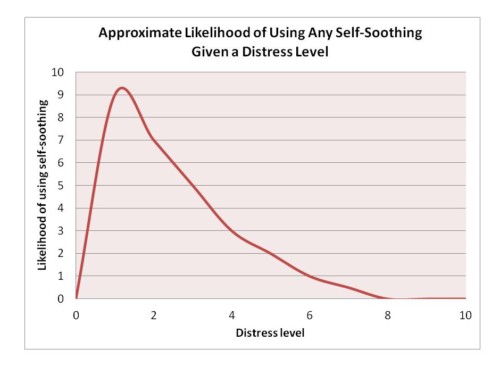By Tracy Cassels
What is “fake crying”? Fake crying was established by noting that the babies showed positive affect just prior to and just after the “crying” episode. To be clear, however, in the majority of (over 98%) of cases, the affect was negative for the 5s preceding the crying behaviour, although this drops to 73% for the 20s preceding the crying. In the first 5s after crying, babies showed negative affect 92 or 94% of the time. However, by the end of 20s after crying, positive affect emerged in approximately 65% of episodes (confirming that fake or not, a parent’s responsiveness alleviates distress rapidly). Finally, only one of the two children showed this “fake crying” pattern, but showed it as early as 7 months of age. This was further confirmed by the mother who reported that there were episodes of fake crying. Now, I know some people don’t believe that babies can “fake cry”; however, I think the question isn’t if they can or cannot as babies can do a lot and fake crying is most likely one of them, it’s what it means when they fake cry. In our society anything “fake” is associated with something disingenuous, something to be avoided, something bad. Is fake crying bad? Not at all, according to Dr. Nakayama and myself. In fact, Dr. Nakayama says in the article, Since infants cry to get the attention of their caregivers, when they “pretend” to be in distress, the caregiver still comes nearer [to give] the babies love and attention, through everyday mother-infant interaction. Such individual interaction contributes greatly not only to an infant’s social development but also to their emotional development… Fake crying could add much to their relationships. Just think of it this way: If you are trying to get someone’s attention and you lack the necessary development to simply ask them, you are going to use the means you have available to you. This can include a fake cry simply because you know that crying has gotten people’s attention in the past. The fact that a baby may not have other means at that moment to get their caregiver’s attention (or have tried other methods and failed) is what differentiates it from the type of manipulative crying we attribute to older individuals in our society (i.e., adults, and sadly often female). Isn’t this manipulative and we should not respond? This is a very Western idea so I’m not surprised that it was from Japan that this research came out with no hints of negativity. Again, in our society we often forget that babies are not adults. In many ways we tend to attribute the same intentions to our babies as we would to another adult and this simply isn’t true. In the most technical sense of the word, yes, this is manipulation. In the common, negative use of the word, no this is not. Or rather it’s as much negative manipulation as simply calling your partner’s name if you’re in another room is. The baby is simply attempting to call to their caregiver. The real problem comes if we see this as a non-valid means of communication and cease to respond. During late infancy, children are learning a ton about how to engage with others, sustain attention (“joint attention”), and interact socially[3][4]. Just as not responding to real cries can lead our children to shut down and show signs of learned helplessness (see here for a discussion), not responding to their efforts to engage us and obtain our attention can also lead to them ceasing to feel as if they have control over their environment. Where parents may want to engage differently is if they feel they can teach other forms of communication to their children. That is, if fake crying is seen as something parents want to stop either because of a misguided view that it will lead to whining (no research to support that) or because they simply don’t like it, it is up to the parent to try and teach their infant a way to communicate that will lead to them being responsive. If parents fail to do this, they are taking away an infant’s means to communicate and leaving them helpless. Anything else of note? Actually yes, one thing… The one child who did show this fake crying was the youngest of three children whereas the child who did not show any fake crying in this period was an only child whose mother is noted to have been able to respond “in a more focused way” when she cried. It is interesting to think that our children are smart and capable enough to learn how to use crying when they require it. As the youngest of three, the one baby had to find ways to ensure her mother provided her with the attention she was clearly in need of and fake crying was a way to ensure she received this attention. This should probably be no surprise to parents who have more than one child: You as a resource can only do so much. Luckily our babies are willing to call us on it when they need us to refocus on them! [1] Nakayama H. Changes in the affect of infants before and after episodes of crying. Infant Behavior and Development 2013; 36: 507-12. [2] Nakayama H. Development of infant crying behavior: A longitudinal case study. Infant Behavior and Development 2010; 33: 463-71. [3] Tomasello M. Joint attention as social cognition. In C Moore & PJ Dunham (Eds) Joint Attention: It’s Origins and Role in Development (pp 103-130). Hillsdale, NJ: Earlbaum, 1995. [4] Callaghan T, Moll H, Rakoczy H, Warneken F, Liszkowski U, Behne T, Tomasello M. Early social cognition in three cultural contexts. Monographs of the Society for Research on Child Development 2011; 76. A new article out of Japan suggests babies between seven months and a year engage in a “fake cry” to obtain attention. The article
A new article out of Japan suggests babies between seven months and a year engage in a “fake cry” to obtain attention. The article






“sadly often female” is pretty unnecessary to add